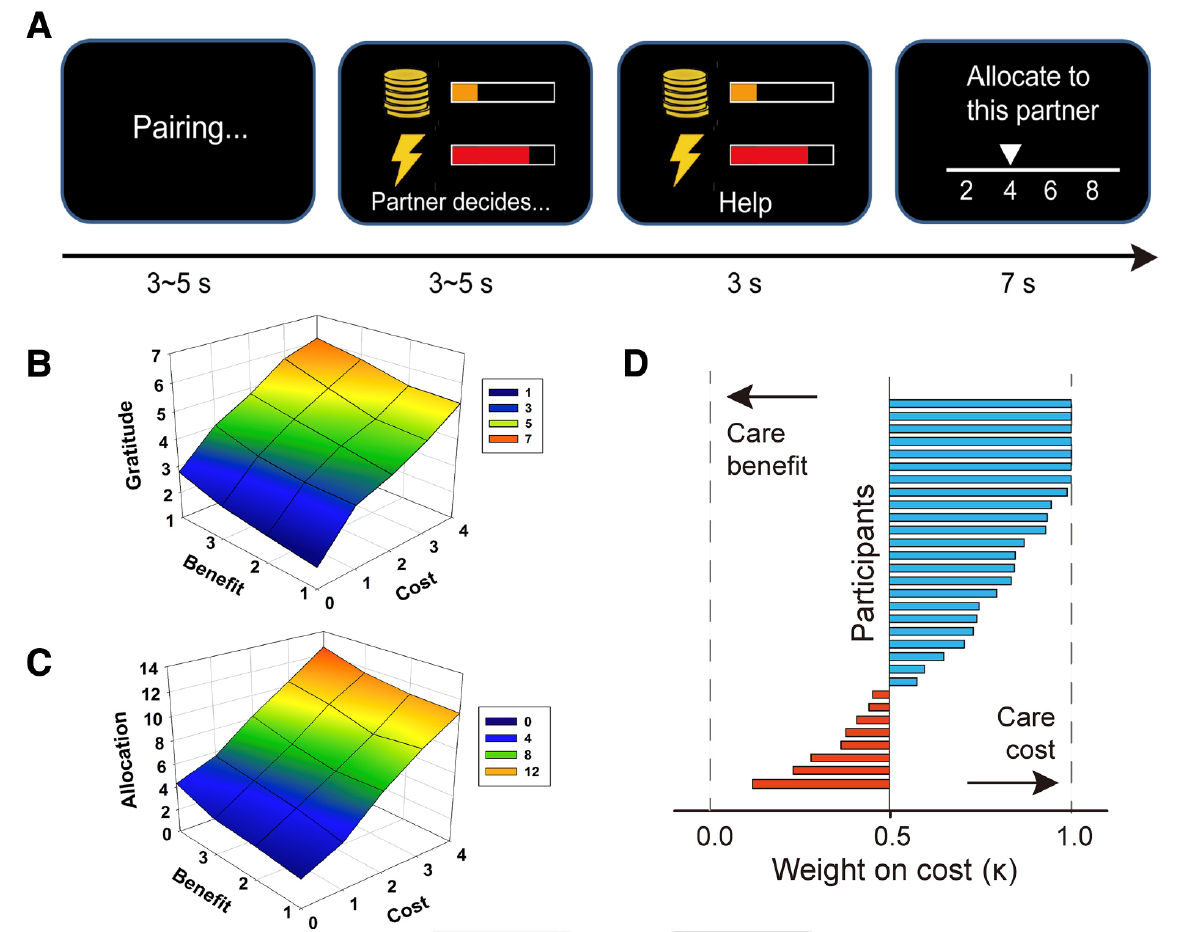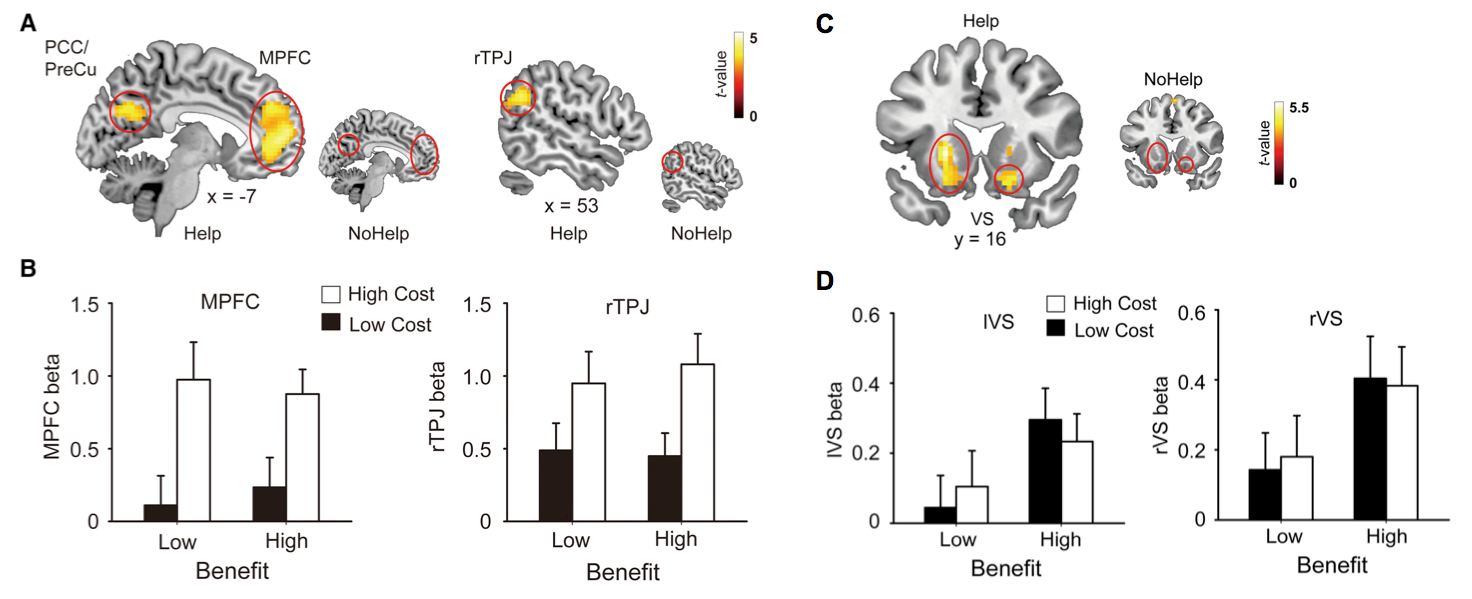Xiaolin Zhou’s group at the PKU-IDG/McGovern Institute for Brain Research, School of Psychological and Cognitive Sciences at Peking University has recently published a paper on the Journal of Neuroscience (7 May 2018) titled “Decomposing gratitude: representation and integration of cognitive antecedents of gratitude in the brain”. Former PhD student Honbo Yu (now a post-doc at Yale University) and PhD student Xiaoxue Gao are the co-first authors of this paper. Former undergraduate Yuanyuan Zhou (now a PhD student at Tsinghua University) contributed to this work. In this paper, they presented their latest findings on the neural mechanisms underlying the generation of gratitude. This study has been promoted by science media across the world, such as “Science Daily,” “Medical Express,” and “Psychology Today,” and has been widely spread on Tweeter.
Gratitude is a typical social-moral emotion that plays a crucial role in maintaining human cooperative interpersonal relationship. Previous neuroimaging research in which participants imagined themselves as survivors of the Holocaust who received food, shelter and clothing from strangers identified the medial prefrontal cortex and perigenual anterior cingulate cortex (pgACC) as brain regions associated with gratefulness. However, the neurocognitive processes through which various components and antecedents of gratitude are integrated remain largely unknown.
Xiaolin Zhou and colleagues addressed this question by having participants play a social interactive game (Fig. 1) in which their partner would decide whether to pay different sums of money to in order to prevent the participant from receiving a pain stimulation. By manipulating the pain intensity and cost to the partner to help the participant, the researchers found that partner cost activated brain regions involved in mentalizing while levels of pain reduction were encoded in regions involved in reward representation (Fig. 2). Connectivity analyses revealed that these regions feed information to pgACC, which tracked feelings of gratitude over time (Fig. 3). Their findings indicate that gratitude may arise from the integration of relevant social information in pgACC. The study could spur future investigations into how these "building blocks" transform social information into complex emotions.
Xiaolin Zhou’s group has published a series of articles on the neural mechanisms of social emotions (e.g. gratitude, guilt, and envy) and social behaviors (e.g. altruistic behaviors, aggressive behaviors, and revenge behaviors). For gratitude, Xiaolin Zhou’s group has investigated the neural mechanisms underlying the influences of benefactor’s intention on beneficiary’s gratitude feeling, which was published on Emotion, a journal of American Psychological Association (APA). These study were supported by Natural Science Foundation of China and National Basic Research Program of China (973 Program).

Figure 1. (A) Social interactive game. (B) Behavioral results. Post-scan gratitude rating and allocation during scanning (i.e., reciprocity) as a function of self-benefit and benefactor-cost. (D) Behavioral results. Relative weight of benefactor-cost over self-benefit in gratitude rating.

Figure 2. (A-B) Recipient’s self-benefit was encoded in reward-sensitive regions (e.g., ventral striatum). (C-D) Benefactor-cost was encoded in regions associated with mentalizing (e.g., temporoparietal junction).

Figure 3. (A-C) Neural responses in pgACC tracked feelings of gratitude over time and were positively correlated with individual trait gratitude score. (D) Results of effective connectivity (dynamic causal modeling) analysis revealed that self-benefit- and benefactor-cost-related brain regions feed information to pgACC.
Yu, H.*, Gao, X.*, Zhou, Y., & Zhou, X. (2018). Decomposing gratitude: representation and integration of cognitive antecedents of gratitude in the brain. The Journal of Neuroscience. doi:10.1523/jneurosci.2944-17.2018 (* equal contribution)
http://www.jneurosci.org/content/early/2018/05/07/JNEUROSCI.2944-17.2018